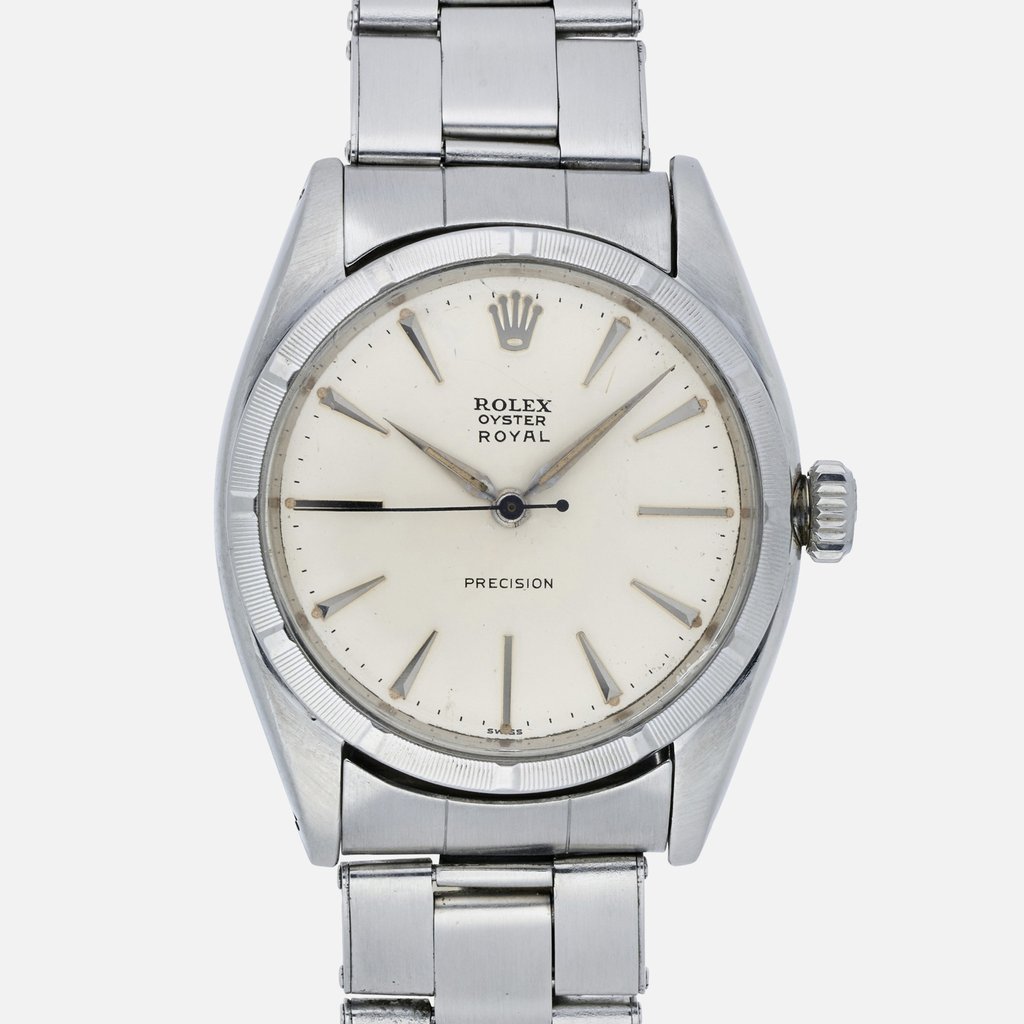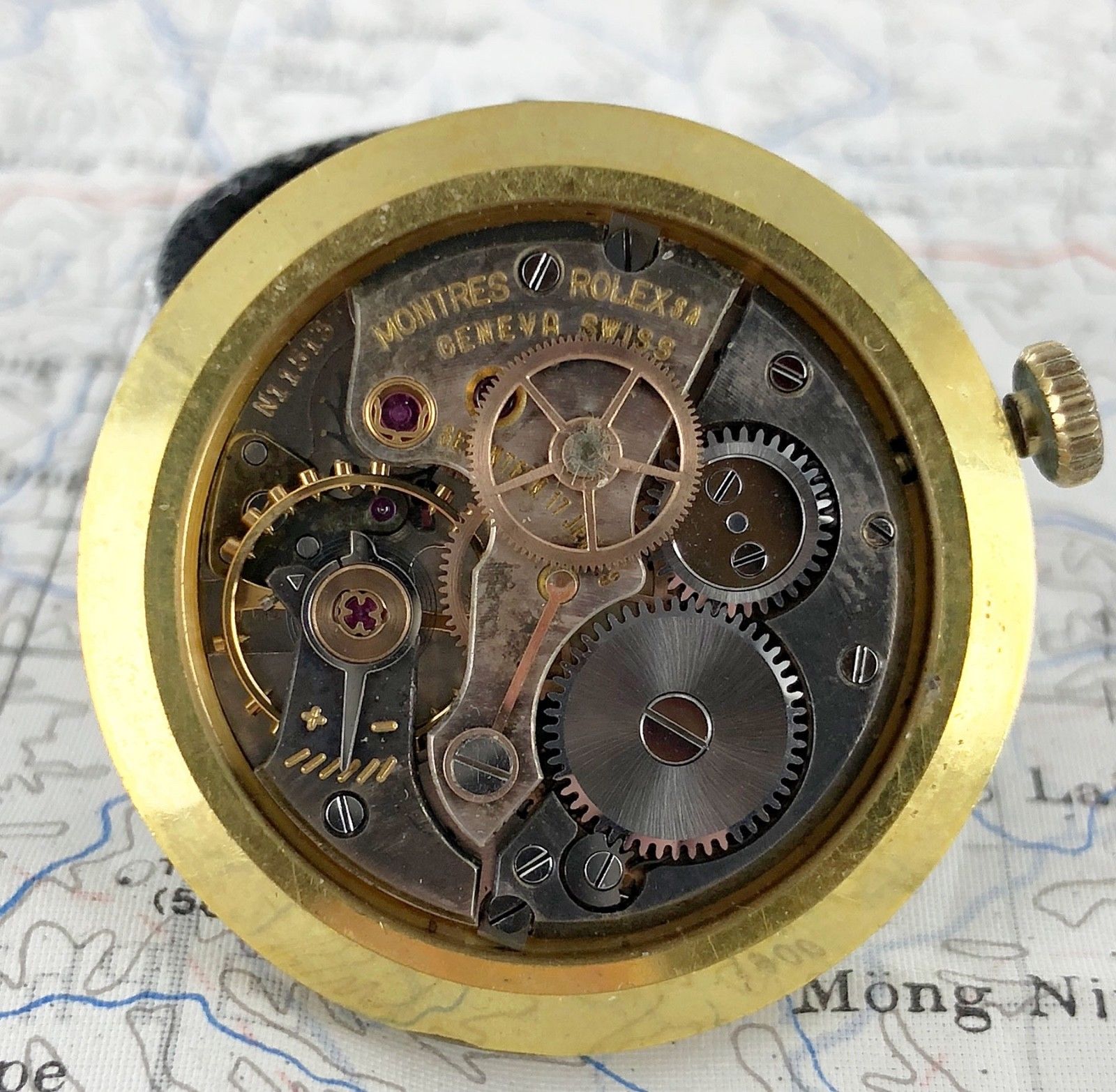Notes: The Precision line offered manually-wound watches when Rolex was primarily known for its automatic caliber. This fact helps to explain the lack of attention that the line got, although Rolex non-automatic calibers also possessed reliability and offered significant power reserve. Manual calibers from Rolex also allow for a thinner Oyster case, which matches perfectly with the original riveted bracelet. Among the Precision line, the most popular model was undoubtedly the 34mm no-date; here we have the rarer 6427 reference, coming with an uncommon ridged bezel. The stunning leaf hands and the cream dial certainly live up to the Royal moniker.
Mechanism: This calibre dates from the mid 1950s. The calibre 1210 was one of the many derivations of the old Hunter 10½ movement, which dated back to the 1920s. The 1210 was one of the last of these manual wind movements, unlike the original 10½ movement it features shock protection on the balance & escape pivots. These movements usually feature 17 jewels, and were used in the 3038 series of 'Pre-Cellini' watches.
The 1210 is the sister to the 1215, with the primary difference being that the 1215 has a date feature where the 1210 does not.
The 1210 is the sister to the 1215, with the primary difference being that the 1215 has a date feature where the 1210 does not.



